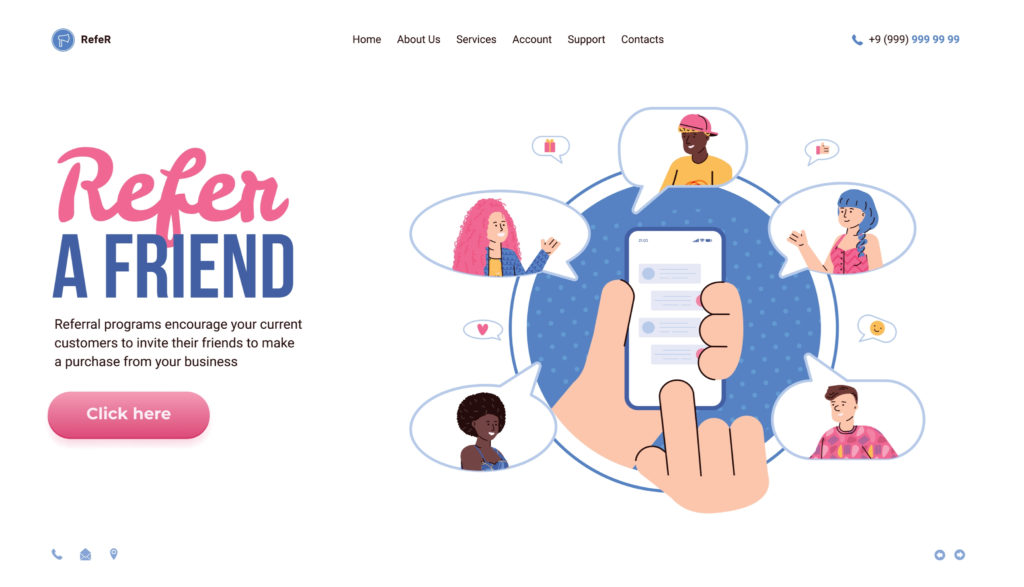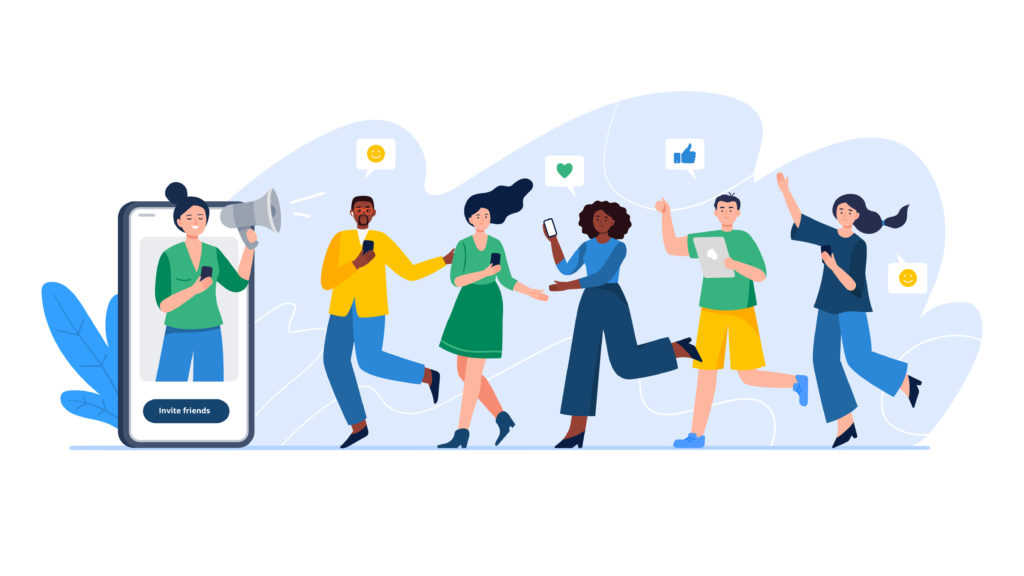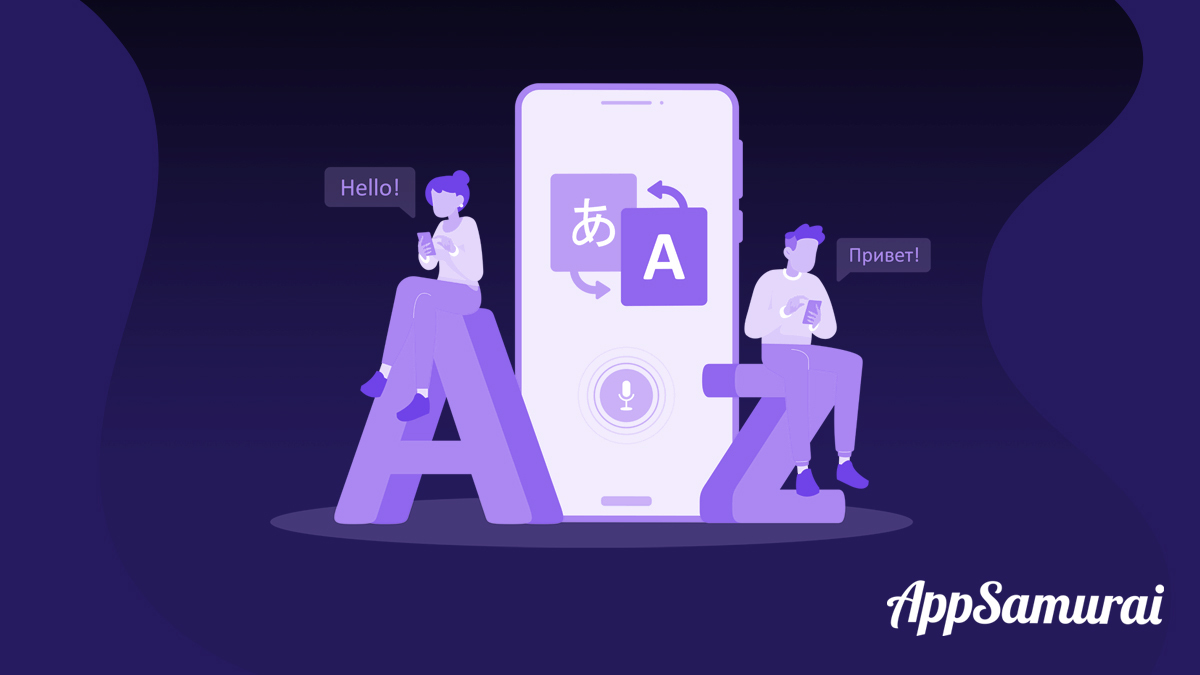The business model for reference apps
The basic function of a smartphone is, just as its name suggests, to make you smarter. Although apps cannot enhance your IQ on their own, understanding how to lay your finger on any element of knowledge in the world will give you a feeling of infallibility – saving your valuable time and keeping your energy from being wasted. The application market is flooded with a plethora of reference apps that target and encompass every field of human knowledge. Similar to the internet, a select few of these mobile reference applications are reliable, and others are inaccurate and blatantly undependable.
The most crucial step in establishing an app that will flourish in the marketplace is to work out which monetization strategy will help you achieve your goal. This step is a cornerstone for your success, but it is surprisingly often neglected or bypassed by application developers. Figuring out which revenue model works for your startup will help you generate money and maintain a stable source of income.
There is a lot of rivalry in the app startup sector. Most applications, if they make any income at all, struggle to turn out any steady income due to the oversaturation of the industry. Application developers who advertise their app to acquire new users but are unable to convert them into users will rapidly find their finances shrinking if they don’t have a defined and effective monetization plan. Many startup founders commit the fundamental error of spending all of their efforts on building the app and very little on establishing the business model that underpins it.
Freemium applications are among the most efficient and feasible marketing strategies available. With a freemium app, you offer users a restricted version of your software for free and motivate them to become clients by charging for a complete edition. This strategy succeeds because the performance of your main app reflects the worth of your service and encourages customers to pay for extra capabilities. Never overlook the value of the word “free.” Users are more inclined to acquire free applications since they are more affordable and don’t have to worry about it.
Concentrate on attracting new customers while establishing a freemium model by making the cost of entry as cheap as possible. Clients will be eager to improve their value by paying for premium access.

One of the biggest advantages of freemium applications is that they don’t demand any downloads to make income. One-time purchases and subscription fees are the two major methods to commercialize this approach. With subscription fees, you may collect a limited group of customers on a regular basis until they withdraw, allowing your company to earn recurring revenue out of each paying customer. On the other hand, one-time payments can only be accepted once; consequently, more customers must be persuaded to earn the same sum of income.
Developing an appealing app with in-app purchases is a common app marketing technique, particularly for mobile games. The enormous popularity of games like Clash of clans and Simcity has offered app developers a glimpse into the financial possibilities of creating digital goods and enabling in-app purchases to acquire them. The convenience, adaptability, and sustainability of this approach are three of its greatest merits. All you require to operate with this model is a fascinating software that enables players to increase their worth by purchasing in-game digital items. This concept is well-suited to games and engagement, but it may also be used for other apps. This commercialization approach would apply to a dating service where users pay in-app tokens to acquire extra functionalities.
This model’s fundamental concept is that the simulated products you’re marketing must provide a sufficient level of usefulness to the user. Whether it’s more levels or customizable avatars in a game, or the option to pay credits to see when another user on an app has visited your account, your proposition must enable the customer to do stuff they want. The more transparent your value offer is, the more you can encourage users to invest money in your app. One big disadvantage of adopting in-app purchases as a solo revenue approach is that it needs a large number of users to produce substantial profits.
Promoting applications through advertising and endorsements may be highly beneficial for more determined app developers or those with over a hundred thousand monthly active users. On the other hand, app producers with a limited clientele will generally discover that this strategy is insufficient to support their corporation’s development. This strategy necessitates a sizable and constant customer base who engage with the app on a regular basis to earn significant and continuous income.
How to promote reference app
How to promote reference apps is a recurring question. Developing a useful mobile app that stands out in a swarm of duplicate apps is a difficult challenge, although there are plenty of reference app ideas on the internet. However, advertising your application is an ongoing battle that will almost certainly never stop as long as the app lives.
What strategies can you use to advertise your world reference app more effectively than your competitors? How do you create a reputation for your mobile app? How do you persuade your consumer base that you are superior to the competition? Because if you don’t, you could end yourself like most others, stranded at sea.
You must market reference apps through all of your internet platforms, just as you would any new product release. This is not only a simple method to bring prominence to it, but it also communicates that your app is part of your broader experiential marketing.
Without social media, no online service advertising is sufficient; but, for social media to be genuinely productive, it must be continuous. Marketing your app on social media on an irregular basis may result in a surge in installations for a brief period of time, but the effect will fade. The greatest approach to consistently growing visibility and sales for your app is to have a continuous social advertising plan. It also guarantees that your consumers understand that your app is an important part of your company.

Present your app
The title of your app has a big impact on how people find it on the Playstore. Select a name that is easier to remember, easy to pronounce, and indicates what your application offers. Make a statement. Resist using general words or titles that are too identical to those of other apps. The name of your app can be up to Thirty characters in length.
Because your app symbol is one of the first things people see when they open it, it’s critical to generate a good initial impression that expresses the competence and intent of your app. Collaborate with a visual artist to develop a basic yet identifiable symbol. Try experimenting with several alternatives to find out which icon is the most recognized and relevant to your core demographic.
The tagline of your app should be a short sentence that summarises your app. Try using this instead of your app’s name to convey the app’s worth at a deeper level. Resist using phrases like “greatest app in the world.” Alternatively, draw attention to features or common usage of your program that are popular with your target demographic. When uploading a new edition of your app, you may change the subtitle to assist you in figuring out which one is more successful at attracting users. A subtitle that shows beneath your app’s name in the App marketplace may be up to 30 characters in length.
An app teaser is a brief video that consumers may watch immediately on the Play Store to see your app’s elements, capabilities, and user interface. Previews can last up to 30 seconds and use video recorded on the smartphone to demonstrate the app’s functionality. You may display up to three app previews, which you can customize for all Play Store languages.
When customers visit your product homepage, the app previews run with muted music, so make sure the opening few moments of your video are aesthetically appealing. When videos do not stream, app preview poster frames display.
Best reference apps use screenshots of your app’s user interface to graphically describe the app’s user experience. On your product pages, you may include up to 10 screenshots. When no app demo is enabled, the top one to three photos in search engine results will display, based on the arrangement of your screenshots, so make sure they emphasize the core of your app. To effectively illustrate your app’s worth, concentrate each following screenshot on a primary advantage or feature. If your app enables Dark Theme, include at least one screenshot that shows how users will experience the feature.
Include an interesting overview that emphasizes your app’s features and functioning. A succinct, instructive paragraph accompanied by a brief list of key characteristics is the best description. Make it clear to prospective customers what makes your software special and why they’ll enjoy it. Use vocabulary that your target market will enjoy and comprehend, and engage in your brand’s style. The most crucial statement in your description is the first one; readers can read it without touching to read more. Emphasize your app’s distinctive features since every word matters.
Keywords influence where your app appears in search results, so pick them wisely to guarantee that it is readily found. Specify keywords that you believe your customer base will utilize to locate an app similar to yours. To assist the query optimizer in displaying your app in appropriate queries, be detailed when defining its features and functioning. Evaluate the cost of ranking highly for less prevalent phrases vs. ranking poorly for popular terms. Prominent, essential keywords like “jobs” or “social” may generate a lot of traffic, but they’re also quite challenging in the rankings. Fewer popular searches generate less traffic, but they are also less competitive.
The Play Store’s categories assist customers in finding relevant apps that match their requirements. You may give your app a direct and indirect variety. The major category is essential for visibility since it aids consumers in finding your app while exploring or narrowing search results and decides which page your app displays on the Play Store. Make sure you choose the most appropriate core category. If you select categories unrelated to your app, it may be dismissed when it’s applied for evaluation.
Concentrate on delivering a fantastic app experience that inspires customers to depart favorable comments because ratings and reviews impact how your app tops in search and can promote users to participate with your app from search results, so rely on offering a wonderful user experience that persuades users to leave favorable reviews. Personal comments influence the overall rating of your app, which appears on its product page and in search engine results.

Improve user experience
Failed mobile apps all have one factor in common: a bad consumer experience. As mobile platforms change and improve, it’s becoming more vital than ever to keep the user experience in mind.
A short search of the play store will reveal that the app industry is crowded, making it more vital than ever to differentiate yourself from the competitors. Although the app stores include a plethora of quick and intuitive apps that provide users with a distinctive and useful encounter, many still have negative customer ratings. What is the reason behind this? Most likely because consumers were annoyed by inadequate functionality or found it difficult to perform a task.
If you wonder how to reference an app and intend to create a fantastic user experience, the key point to remember is that your customers must continuously be your top priority. Recognizing and addressing the demands of certain sets of people will guarantee that your app’s user experience is a hit.
Among the most useful tools for ensuring a user-centered layout is a customer profile. A profile is a collection of information about a user’s physical and digital habits, opinions, requirements, and aspirations for a certain product, in this example, a mobile app. A profile is built with a particular range of clients in consideration instead of designing an app to fit the demands of a general group of individuals.
Onboarding is a crucial part of the user engagement that may significantly impact your app’s popularity. App disengagement levels will rise if a user isn’t onboarded correctly. There are several factors why onboarding impacts the user experience, but an essential element is to avoid confusing your users. It would help if you gave consumers clear guidelines when they first open your mobile app. The encounter will be ruined if you provide excessive data throughout the onboarding process. To increase retention rates, you should leave some sections of the software for users to explore. Clearly show how valuable your software is to consumers without going into great depth about each function.
Many individuals confuse usability with user experience. Despite their interdependence, they are essentially distinct. When a user uses an app, the UX refers to the experience, emotion, intuition, and connection they have with it. Usability refers to how well a mobile app’s design works and how user-friendly it is. The usability of a website is an important part of the entire user experience.
Designing a menu for a mobile app differs significantly from designing a menu for a website, where the menu bar is usually found at the top of the page. You’ll want to make certain that the most critical pages are readily available. Users should not be confused by complex navigation bars.
Users should be able to tell what a button performs just by looking at it. Make sure the user understands what may be selected or swiped. To make user development more accessible and to decrease the training time for users, use style concepts. Both for iOS and Android, specialized applications must adhere to platform-specific norms and requirements.
Mobile content differs from that found on a webpage. Smartphone displays are significantly smaller, making it challenging for consumers to see the information. This may seem like a no-brainer, but several individuals overlook the fact that a mobile app provides a completely unique experience than a website. The most important information should be presented first. Use data to assist the user across your app while also offering value. It’s not necessary to fit everything on the first screen. Users love the gratification of self-initiated exploration, which is why mobile app designing is interactive.
A regular and comprehensive patch management approach is the most efficient tool to safeguard confidential information and systems when it comes to application security. Patch discovery, patch testing, and patch deployment across apps, servers, and workstations are all part of a good patch management solution. Finally, updating third-party apps is not just the most effective and safe method to handle them, but it’s also good business practice.
Remove any obstacles to consumers finding what they’re searching for, especially in a retail app. The user will abandon the checkout process if there are too many stages. Furthermore, it is critical that the search does not provide 0 results. Instead, display similar goods to encourage the customer to look at additional products.
Minimize the duration of time it takes for a user to complete the checkout procedure. Try utilizing autofill and decreasing the number of forms that users must fill out to make it as simple as feasible for them to accomplish a job. It’s also a good idea to have a Guest Checkout option so that customers don’t have to create a new account before making a purchase.

Keep your app up to date.
Application updates, like personal devices, are critical for effective functioning. You will be able to access files and conduct business activities more efficiently if load times are reduced. In addition to the possibility for quick loading times, older programs are more likely to malfunction, necessitating IT support. This consumes important corporate resources that may be put to better use elsewhere.
Frequently, programs have defects that wreak havoc on their usability and efficiency. Perhaps the application crashes suddenly or has graphical flaws. Software upgrades will correct any issues in the application, improving speed and performance once again.
The new features that frequently follow updates are perhaps one of the most important benefits of upgrading your apps from the standpoint of end-users. New features can improve the software, speed your job, or even give a function that you couldn’t do previously, adding value to your workplace.
Frequently, programs have defects that wreak havoc on their usability and efficiency. Perhaps the application crashes suddenly or has graphical flaws. Software upgrades will correct any issues in the application, improving speed and performance once again.
The new features that frequently follow updates are perhaps one of the most important benefits of upgrading your apps from the standpoint of end-users. New features can improve the software, speed your job, or even give a function that you couldn’t do previously, adding value to your workplace.
While additional versions may appear to be an essential advantage for end-users, the most important reason to upgrade your business software is cybersecurity. As we all know, the security environment is always changing, and assaults targeting your apps are no exception. Cyber assaults are more likely to target legacy programs. As previously stated, your IT department may no longer maintain obsolete apps, making them highly susceptible to cyber thieves. Like any other outdated technology, these legacy programs are not necessarily compatible with modern settings, which is critical for company development and growth.
In-app voice-based search
Voice search, also known as voice-enabled search, is a method of searching that employs human voice as the most organic access channel.
The apparent benefit of a voice user interface is that it permits users to utilize a program hands-free and distraction-free while still focusing their efforts on another job. Nevertheless, this isn’t the sole benefit of an excellently structured voice user interface, nor is it even the most important.
Talking is about four times speedier than writing on a capacitive touch gadget, as per Stanford research. As a result, speech is an excellent input method for jobs that need a lot of data, like completing complicated questionnaires and browsing through a big assortment of products.
Voice user interfaces can support several different methods of conveying the identical idea. A voice user interface may accommodate thousands of synonyms and other methods of conveying the same idea.
Voice user interfaces allow the user to concentrate on another task. This is particularly beneficial while operating a car or a forklift since it increases safety and productivity.
It can also assist users with multitasking within a program. In gaming, for example, gamers may change the camera or swap weapons without having to go through a long menu.
Persons with impairments that make using a keyboard and mouse difficult, people with chronic illnesses like Repetitive Stress Injuries who desire to restrict their usage of keyboard and mouse, and people with cognitive challenges are all examples of people who can benefit from voice functions.
Expand search with visual recognition
A visual search is a tool that fills in the blanks when words fall short of describing what a consumer is looking for. It recognizes items in a picture and looks for others that are similar. Artificial intelligence and machine learning techniques are used in visual search solutions, which means that the systems are continually evolving depending on the data they collect. In other words, the more photos processed by a visual search engine, the more accurate it gets. The system examines forms, colors, and sizes to discover the closest matched search results using images as ‘queries.’ If you snap a photo of the ideal table, a visual search might help you find similar or exact tables.
Users may get thorough answers to their common questions via reference applications. If you have this sort of program, the question of how to reference apps becomes easier. Please provide users with clear, well-structured information in a timely way, utilizing the most cutting-edge technologies available to enhance the user experience. Share your knowledge in a fun and appealing manner!



